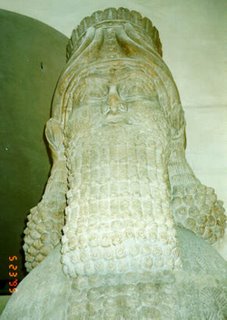
My end of term benchmark test was yesterday for social studies. My system requires a cumulative benchmark test at the end of every nine weeks. Yesterday’s exam contained questions from ancient Indians to Lexington and Concord. Currently it is left to me to write my own benchmark exams. In two or three years, however, Georgia’s new learning standards will be in effect and I feel certain the state department of education will mandate the use of a standard set of exams.
I gather my questions from many different sources including questions the state releases for practice directly from our state test, the Georgia CRCT. I use multiple-choice format for benchmark tests since the state test is multiple-choice as well.
This isn't the only method of assessment I use. I ask students to complete all types of mini-assessments that include graphic organizers, observations, verbal questioning, matching quizzes, short answer, essays, and projects. I stick to multiple-choice tests for my nine weeks exams though.
So here’s a sampling from my exam:
1. The Adena, Hopewell, and Mississippians were among the earliest people to create large, complex villages in North America. When grouped together these civilizations are called the
a. Inca
b. Inuit
c. Kwakiutl
d. Mound Builders
2. The Columbian Exchange affected people all over the world. Which best describes the Columbian Exchange?
a. the movement of Europeans from Europe to the Americas
b. the establishment of settlements in order to search for gold for Spain
c. the decision of European rulers to send their own explorers to the Americas
d. the movement of plants, animals, and people between the Eastern and Western hemispheres
3. King Phillip wanted England to be a Catholic nation and to stop English attacks on his ships. In 1588, the Spanish Armada sailed to England to attack. Which best summarizes why the defeat of the Spanish Armada was important?
a. the defeat meant a new king for Spain
b. the defeat helped the Spanish claim new lands
c. the defeat helped the English become more powerful
d. the defeat allowed other countries to cross the Atlantic Ocean
4. In the 1600s, the success of the French settlements in North America was due to
a. growing tobacco
b. protection of a strong navy
c. trapping of animal skins
d. locating the Northwest Passage
5. In what way was life in the Middle colonies similar to life in the Southern colonies?
a. Most people lived in cities in the Middle colonies and the Southern colonies.
b. Farmers in the Middle colonies and the Southern colonies grew the same crops
c. Children became apprentices in both the Middle and Southern colonies
d. Most people in the Middle and the Southern colonies farmed to earn a living.
6. William Penn believed in religious tolerance. He thought that people of all beliefs should live together in peace. How did religious tolerance in the Middle Colonies affect the colonies’ populations?
a. It brought more conflict to the region
b. It made the population more diverse
c. It made the land more expensive to purchase
d. Many people moved from the Middle colonies
7. Because the British won the French and Indian War in 1763, new land was open to British colonists. This included
a. land in Florida
b. land west of the Mississippi River
c. land west of the Appalachian Mountains
d. land in Canada
8. After several different American Indian attacks King George III issued his Proclamation of 1763. Why did this proclamation anger the colonists?
a. it wouldn’t allow them to elect representatives for Congress
b. it wouldn’t allow them to move west of the Appalachian Mountains
c. it wouldn’t allow them to build forts
d. it resulted in more British soldiers arriving in the colonies
9. Most colonists did not mind paying the tariffs the Sugar and Stamp Act demanded. The problem was
a. the colonists did not feel the tax was high enough
b. the colonists wanted to have representation in Parliament
c. they didn’t like the names of the taxes
d. they felt other products should be taxed
10. The Boston Tea Party made many people in Great Britain angry. As a result, Parliament passed the Coercive or Intolerable Acts. One purpose of these acts was to
a. let the colonists choose whether or not to buy tea
b. force the colonists to purchase tea from Great Britain
c. close the port of Boston as a punishment for its citizens
d. capture ships that brought tea from other countries
As of 3:30 today I am on spring break... finally.
I will spend the next couple of days grading my tests and breaking the data down into AYP sub-groups. Why? Just cause. I like to see how I am doing with one group compared to another. I like to see how 5th period compares 6th and 7th periods and attempt to pinpoint the possible reasons why.
So, how did you do? The answers are d, d, c, c, d, b, c, b, b, and c.
The real test had 30 questions. In case you’re wondering the questions I’ve posted are similar to the Georgia CRCT but are not released questions. I used questions I made up and some from another source.








